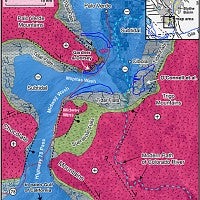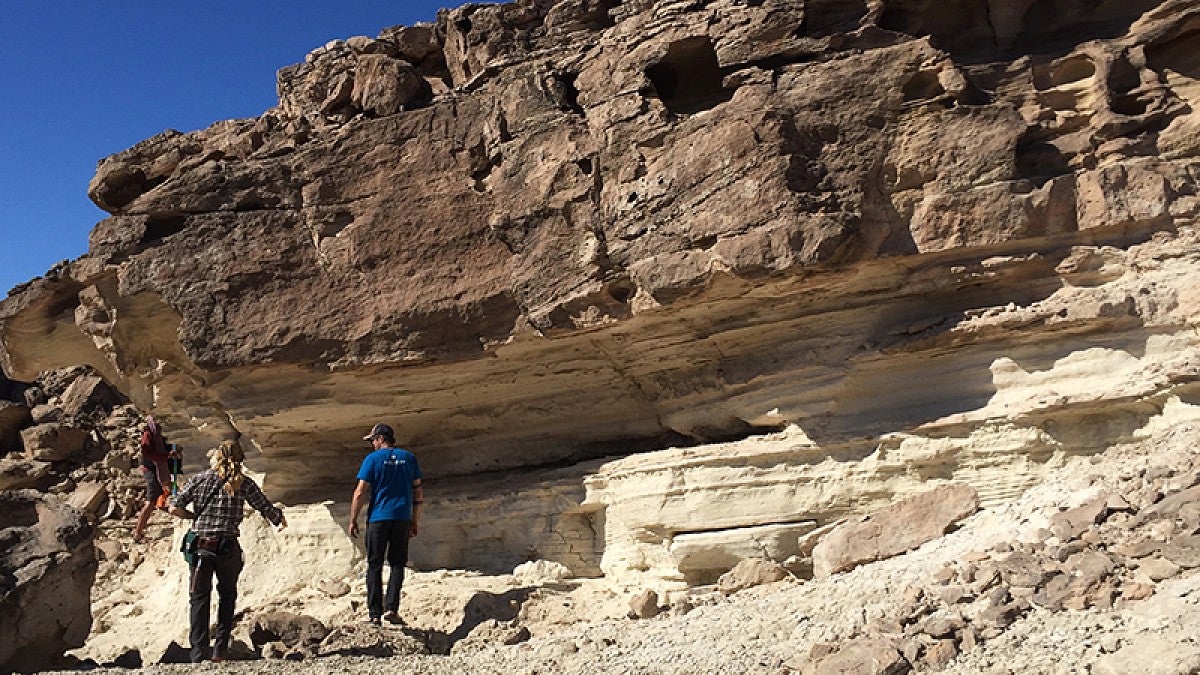Two new studies by Rebecca Dorsey’s University of Oregon research group have validated the idea that the ebb and flow of seawater tides, amid a wet climate more than 5 million years ago, covered basins that are now part of the arid lower reaches of the Colorado River valley.
The evidence emerged from separate projects northeast of the Chocolate Mountains in a region that now encompasses the small desert communities of Cibola, Arizona, and Palo Verde, California. The region is in the southern Bouse Formation near Blythe, California.
The studies, funded by the National Science Foundation, were published online ahead of print in the international journal Sedimentology.
“Taken together, our new papers provide conclusive evidence that the southern Bouse Formation formed in and around the margins of a marine tidal strait that filled the lower Colorado River valley prior to arrival of the modern river system,” said Dorsey, a professor in the UO’s Department of Earth Sciences.
The first paper, led by former master’s student Brennan O’Connell, published Oct. 29. The research focused on sediments of the late Miocene to early Pliocene east of the Colorado River and south of Blythe.
The Miocene, a geological epoch, lasted from 23 million years ago to 5.3 million years ago; the Pliocene occurred between 5.3 million and 2.6 million years ago.
O’Connell and co-authors describe a rich mixture of carbonate mudstones, plant debris and traces of ancient organisms that record brackish water conditions where seawater was diluted by a large influx of fresh water due to high annual rainfall, before waters of the Colorado River flowed into the area.
Previously, O’Connell, who is now pursuing a doctorate at the University of Melbourne in Australia, and UO colleagues had found evidence that the Gulf of California once reached as far north as Blythe, as detailed in the journal Geology in 2017.
The sediments, O’Connell’s new study concludes, formed in wide tidal flats along an ancient, humid-climate marine shoreline. An abrupt transition to low-energy subtidal lime mudstone, she found, records widespread marine flooding associated with a long-lived regional rise in sea level. Relative sea level rise happened when the land sank due to long-term tectonic activity.

Co-authors with O’Connell were Dorsey, Stephen T. Hasiotis, a geologist at the University of Kansas, and Ashleigh Hood at the University of Melbourne.
The second paper, led by doctoral student Kevin Gardner and co-authored by Dorsey, published Dec. 5. It documents tidal sediments of the same age on the opposite side of the same ancient tidal strait. The sediments accumulated where strong daily reversing currents swept north and south along the axis of the tidal strait, driving migration of large subtidal dunes and depositing large-scale, cross-bedded carbonate sands.
The migrating dune bedforms, the authors noted, could not have formed by tidal-like processes in a lake as some scientists have proposed. The team’s results indicate that sometime after late Miocene to early Pliocene, the sediments deposited during those times were uplifted to elevations up to 330 meters above sea level in the Chocolate Mountains as a result of long-term crustal strain related to motion on the San Andreas fault.
A map of the southern Bouse tidal seaway, published in Gardner’s paper, reconstructed the data from both studies, showing that desert communities from Blythe to Palo Verde, were submerged under shallow seas with strong fluctuating tidal currents during late Miocene to early Pliocene time.
In 2018, another Dorsey-led paper in the journal Sedimentary Geology found that lower stretches of the Colorado River were influenced by tectonic shifts in underlying bedrock and changing sea levels. The river, that study concluded, experienced a series of stops and starts in sediment output during early stages of the river between roughly 6.3 and 4.8 million years ago.
—By Jim Barlow, University Communications


